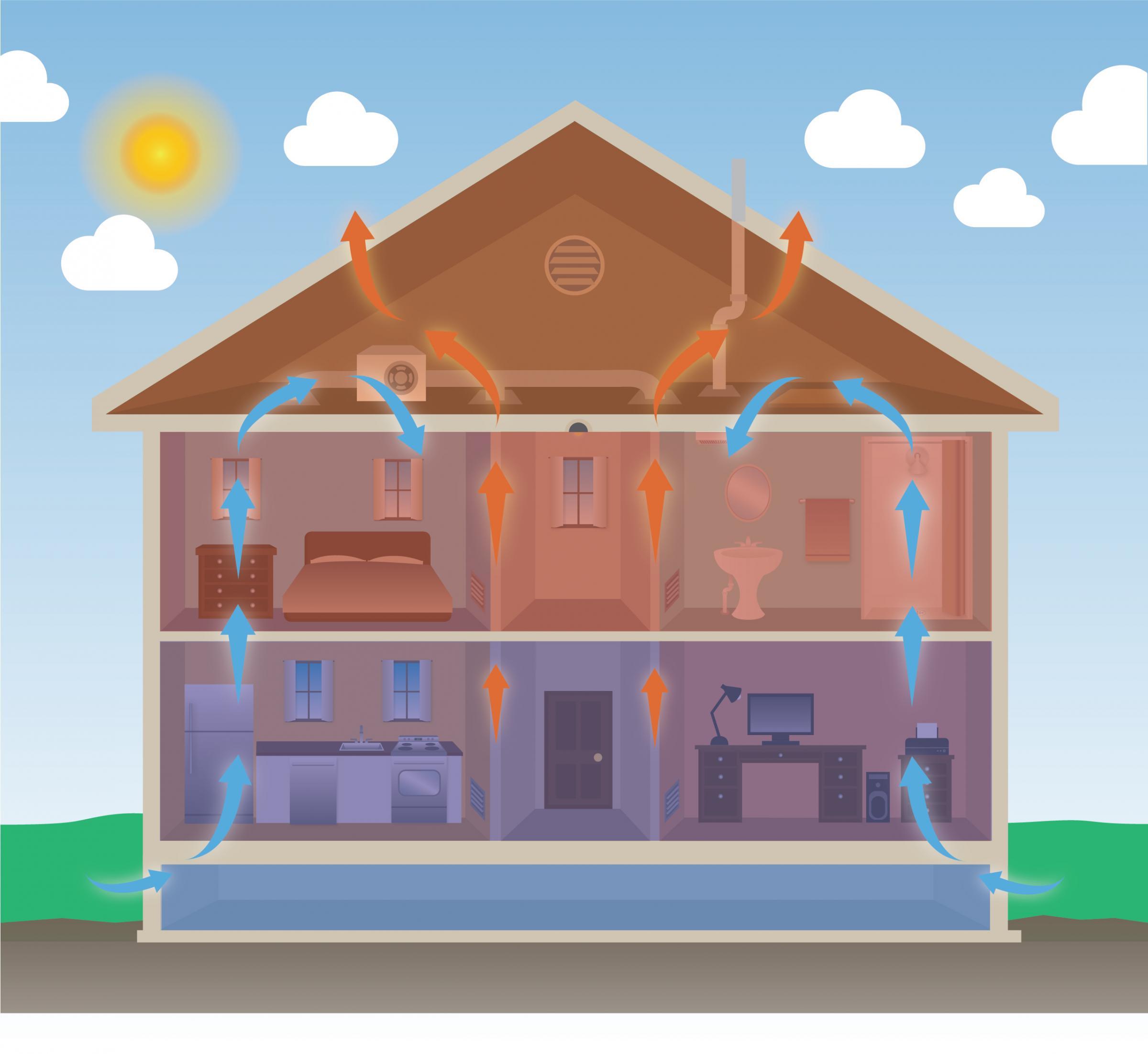
You’ve probably heard it said that “heat rises,” but have you ever wondered why? The answer to this question has to do with a natural phenomenon called “stack effect” — something we get a lot of questions about from homeowners in Central Pennsylvania.
Stack effect has a major influence on how healthy and comfortable your home is throughout the year, and when you understand how it works, you can better understand how to go about improving your home. Here is what you need to know about the stack effect and its impact on your health and comfort.
How Stack Effect Works
Stack effect is centered around one basic concept — hot air has a natural tendency to rise because it is less dense than cold air.
In the winter, for example, warm air naturally rises to upper areas of your home. If your attic is under-insulated and has air leaks, that warm air will continue to rise into the attic and escape through the roof. This, in turn, creates a suction effect which pulls cold outside air into lower areas of the home through existing air leaks.
In the summer, the process reverses. Cold indoor air sinks into lower areas of the home, pulling hot outside air in from above.
Stack Effect Influences Home Health & Comfort
While stack effect is a natural phenomenon that occurs in every home, it becomes intensified when there are air leaks or insulation gaps throughout your home. This, in turn, leads to a number of home health and comfort issues, some of which you may not even be aware of:
Crawlspace air permeates your home
Many homes here in Central PA have damp and musty crawlspaces. While a damp and musty crawlspace may seem of little bother, stack effect causes contaminant-filled air from the crawlspace to rise and permeate every corner of your home. This can significantly harm your home’s indoor air quality, or IAQ.
Unwanted heat accumulates in the summer
If the second floor of your house feels uncomfortably hot in the summer, it’s likely because air leaks in the attic and gaps in insulation are intensifying stack effect in your home.
Cold drafts seep in during the winter
Do you feel breezes of cold air in your home during the winter? This is likely because stack effect is sending warm air out through the roof and pulling cold outside air into lower areas of the home.
Combat Stack Effect with Targeted Home Upgrades
Fortunately, with the right home improvements, you can minimize the consequences of stack effect for an overall healthier and more comfortable home. We recommend starting with air sealing and insulation, especially in the attic. These important upgrades will prevent air and heat from traveling freely into and out of your home.
If your indoor air seems to be affected by a damp and musty crawlspace, we also recommend crawlspace encapsulation. Crawlspace encapsulation resolves water issues in the crawlspace, keeps out excess moisture, and helps prevent mold growth.
Not sure which home upgrades to start with? The team at Energy Smart Home Improvement can help. We offer in-depth energy audits to identify how stack effect is working inside your home. After your energy audit, our team can show you exactly which home upgrades will be most effective at making your home healthier and more comfortable.
